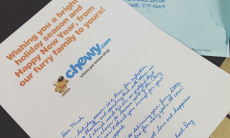There is $80 million of non-dilutive voucher financing available to smaller life science companies. Your company may be eligible for financing if you meet two conditions:
- Have a new chemical entity, which can effectively treat the following:
- Rare tropical diseases – specifically listed in the FDA guidance, or
- Rare pediatric diseases – specifically listed in the FDA guidance, or
- The impact of nuclear fallout from an accident or a war, and you
- Receive an NDA approval for this new chemical entity for the above applications.
- If the applications are inherently dangerous such as TB or a nuclear event, then only animal studies are needed and not human clinical studies for approval by the FDA– designated as the “Animal Rule” – reducing the cost and timeline of the NDA.
The Purpose of the Priority Review Voucher (“PRV”)
The PRV was designed by the FDA and US Government to incentivize companies to develop and commercialize drugs for rare diseases and treatments related to military threats to the United States. Without this incentive, companies would not spend time focusing on these applications due to the low economic return.
While the small company A sells the PRV to the larger company B, it retains the underlying technology and NDA approval, benefiting from the revenue and profits for the sale of approved product in the market. Stated differently, the PRV can be applied to any FDA product approval and is not related to the technology or FDA approval from which it was derived.
The PRV is of high value to those pharmaceutical companies (generally big pharma) who are working on the larger clinical programs for an NDA approval. The PRV provides them with accelerated, fast track approval by the FDA, which shortens the time to market and reduces the cost. Once company A receives a voucher, it advertises its availability to the larger companies. The recent payments for the PRV have been $80 million or more.
Sometimes, prior to the receipt of a PRV, the smaller company A may arrange to license the right of first refusal to a larger company B to assist in the funding of the clinical program of the smaller company A. Many of the larger companies have business development personnel, who are assigned the responsibility to evaluate potential PRVs.
Steps in the Process for Receiving a PRV
The first step of the small company A, which has a new chemical entity, is to evaluate its efficacy in treating the rare diseases listed by the FDA or for the treatment of the damage caused by nuclear radiation to people. It would be preferable to be effective with rare diseases which are inherently dangerous to people because the animal studies are normally much quicker and cheaper than human clinical studies.
The second step is to prepare a document, which describes: 1) the proposed indication, 2) how it fits with the guidelines, 3) a detailed discussion of the new chemical entity including its mechanism of action and the data demonstrating its effectiveness on the target indication, and 4) the proposed preliminary plan for clinical and/ or animal studies to receive NDA approval.
The third step is to meet with the FDA to discuss the prepared document and the indication, the current data demonstrating efficacy and the proposed plan for additional studies. In some cases, the FDA will provide general feedback on the application and the clinical and/ or animal study plan and– in other cases– they will send a letter confirming this is a potential voucher application.
The next step is to modify the clinical and/ or animal studies based on the comments of the FDA in conjunction with a CRO, which would act to execute the clinical studies and determine a timeline and cost of the studies. At this stage, the smaller company A may want to consider the shopping of a right of refusal as a potential fund-raising if they do not have the cash to complete the project.
Most of the PRV indications fall under the Orphan Drug category, since the potential patients are less than 200,000 and thus would file as an Orphan Drug for the NDA. This means they would not have a large NDA fee and also, receive the significant benefits of an Orphan Drug product.
At this stage, the PRV process is similar to any other NDA process, which involves meetings with the FDA after the completion of clinical studies and/ or animal studies, to discuss the results and revise or confirm the following clinical/ animal studies if needed.
Once the studies are complete and the Orphan NDA is approved, then the small company A is awarded the PRV. At that time, the small company A would contact the larger B companies, either directly or via an investment banker, to determine who has an interest and set up a competitive bidding process.
I would like to acknowledge Kay Scanlan, a superb regulatory consultant, who has educated and trained me and others about the PRV process and its benefits.
The Pros and Cons of the PRV Program for the Smaller Company
A con is the new chemical entity has questionable efficacy on the rare diseases or on the treatment of nuclear radiation, then it is probably not worth pursuing the PRV path.
Three pros are:
- The $80 million target benefit is a large non-dilutive funding, which would have a significant boost in the market cap of any small life science company, even if the garnering of the PRV has a lower probability. It provides a significant amount of funding for other indications and clinical studies.
- It enables a small company to develop an ongoing revenue and cash flow stream from a business even if the potential market size is relatively small. The Orphan Drug status provides 7 years of exclusivity in this market. If the product is an antimicrobial, then the Gain Act provides some additional exclusivity.
- It may create sales to other related indications, which can be added by some additional marketing clinical studies on those indications.
Overall, the PRV or voucher funding is so potentially significant to most small life science companies that it should be considered if their new chemical entity can be effective on these rare diseases or the treatment of nuclear radiation.
We are pleased to advise and guide you if you are considering this for your company.




